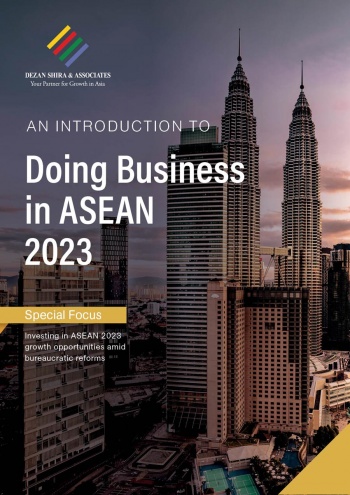Oman-India FTA Talks Expected to Conclude in January: Latest Updates
Oman and India have continued to keep pace with fast moving negotiations to their bilateral free trade deal. We discuss key issues in brief.
By Melissa Cyrill
Oman and India have sped up negotiations to their bilateral free trade deal (FTA), officially called the Comprehensive Economic Partnership Agreement (CEPA). Representatives from both sides concluded the second round of FTA talks in Muscat, Oman from December 9-14, 2023. The first round of talks took place in New Delhi less than a month prior, from November 27-29.
“Good progress is being made” as negotiations to the text contained in most chapters have now been concluded by the two countries per government officials speaking to the media.
Although the negotiations on [the Oman-India] CEPA have started only recently, they have made substantial progress in the last few rounds of discussion and both leaders gave strong impetus and push to conclude the CEPA agreement as soon as possible. – Indian Foreign Secretary Vinay Mohan Kwatra
Oman-India bilateral trade and impact of a free trade deal
A full-fledged trade deal will improve commercial and business engagement between the two countries. Oman is the third largest export market for India among the Gulf Cooperation Council (GCC) countries.
Bilateral trade between Oman and India stood at US$12.39 billion in 2022-23. Indian exports rose from US$2.25 billion in 2018-19 to US$4.48 billion in 2022-23, accounting for 6.6 percent of the Gulf nation’s imports. In FY23, Omani exports to India amounted to US$8 billion, indicating a clear trade deficit for India.
The six-member GCC grouping also includes UAE, Saudi Arabia, Qatar, Kuwait, and Bahrain. A CEPA between the UAE and India has been in force since May 2022, and saw a 12 percent increase in India’s exports to the country in 2022-23. The UAE and India have set a target of US$100 billion non-petroleum trade by 2030.
Oman’s ‘Vision 2040’ and India’s ongoing growth journey create the perfect backdrop for us to collaborate extensively in strategic areas. – President of India, Droupadi Murmu
Oman’s potential duty concessions for India
Currently, Oman imposes an average of 5 percent import duty on over 83.5 percent of India’s merchandise exports, worth US$3.7 billion, with minimal trade barriers. This could get a fillip once the trade pact comes into effect. Illustrating this is a recent report from the think tank Global Trade Research Initiative (GTRI), which states that under the CEPA, Indian exports to Oman worth US$3.7 billion, such as gasoline, iron and steel, electronics, and machinery, would get a significant boost.
Breaking this down, the following export sectors in India are expected to benefit from duty elimination once the India-Oman CEPA is in place:
- Motor gasoline (Indian exports to Oman worth US$1.7 billion)
- Iron and steel products (exports worth US$235 million)
- Electronics (exports worth US$135 million)
- Machinery (exports worth US$125 million)
- Textiles (exports amounting to US$110 million)
- Plastics (exports amounting to US$64 million)
- Boneless meat (exports worth US$50 million)
- Essential oils (exports worth US$47 million)
- Motor cars (exports worth US$28 million)
India’s potential duty concessions for Oman
As per a January 2 report in Money Control, India may be considering offering tariff concessions on certain petroleum products and items like plastics, which are important for Oman.
India’s merchandise imports from Oman amounted to US$7.9 billion in 2022-23, dominated by petroleum products (worth US$4.6 billion) and urea (US$1.2 billion). Other key imports from Oman include propylene and ethylene polymers (US$383 million), pet coke (US$265 million), gypsum (US$115 million), and iron and steel (US$62 million). Most are raw materials and India is opening its market for such imports to reduce trade dependency on certain markets and boost domestic manufacturing.
Why the Gulf market is important for India
With a GDP of approximately US$115 billion and a population of five million, Oman exhibits a much higher per capita income of US$25,060, surpassing India’s US$2,370. This contrast in spending power suggests a potential demand in Oman for a broader range of goods and services, and possibly of higher value. India is thus targeting such markets to boost export-oriented production.
Last December, Sultan Haitham bin Tarik, the first Omani ruler to visit India since 1997, discussed the CEPA deal, a fresh tranche of investments for the Oman India Joint Investment Fund (amounting to US$300 million), and the possibility of rupee-denominated bilateral trade with Prime Minister Narendra Modi. Talks also touched upon space cooperation, satellite building and launching, green hydrogen and renewable energy, and financial technologies. The Oman India Joint Investment Fund is a joint venture between the State Bank of India and Oman Investment Authority and aims to invest in India’s fast-growing sectors. India’s naval ships utilize Oman’s Port of Duqm for logistical and humanitarian purposes.
- Previous Article Shaping ASEAN-GCC Investment Dynamics in 2024
- Next Article Saudi Arabia Upgrades Digital Platforms for Visa Applications





